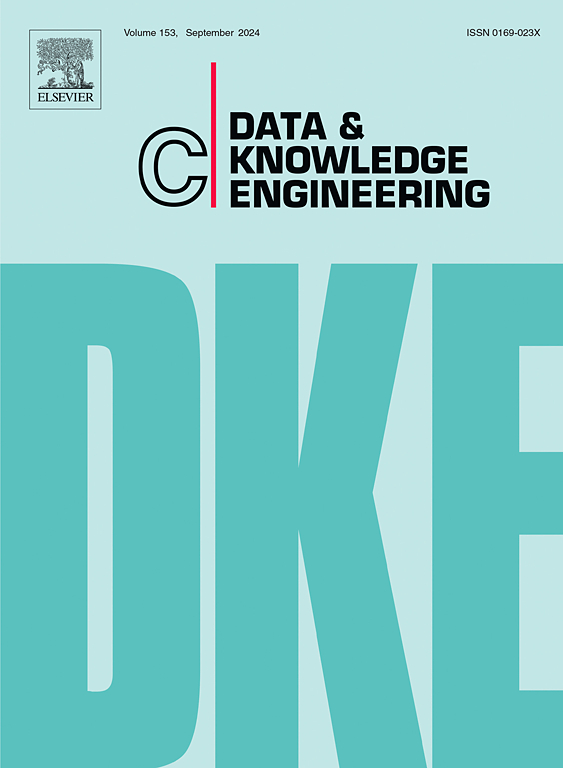Multi-Granularity History Graph Network for temporal knowledge graph reasoning
IF 2.7
3区 计算机科学
Q3 COMPUTER SCIENCE, ARTIFICIAL INTELLIGENCE
引用次数: 0
Abstract
Reasoning on knowledge graphs (KGs) can be categorized into two main categories: predicting missing facts and predicting unknown facts in the future. However, when it comes to future prediction, it becomes crucial to incorporate temporal information and add timestamps to KGs, thereby forming temporal knowledge graphs (TKGs). The key aspect of reasoning lies in treating a TKG as a sequence of static KGs in order to effectively grasp temporal information. Additionally, it is equally important to consider the evolution of facts from various perspectives. Existing models tend to replicate the original time granularity of data while modeling TKGs, often disregarding the impact of the minimum time period in the evolution process. Furthermore, historical information is typically perceived as a single sequence of facts, with a lack of diversity in strategies (e.g., modeling sequences with varying granularities or lengths) to capture complex temporal dynamics. This unified approach may lead to the loss of critical information during the modeling process. However, the process of historical evolution often exhibits complex periodic transformation characteristics, and associated events do not necessarily follow a fixed time period. Therefore, a single granularity is insufficient to model periodic events with dynamic changes in history. Consequently, we propose the Multi-Granularity History Graph Network (MGHGN), an innovative model for TKG reasoning. MGHGN dynamically models various event evolution periods by constructing representations with multiple time granularities, and integrates various modeling methods to reason the potential facts in the future. Our model adeptly captures valuable insights from the history of multi-granularity and employs diverse approaches to model historical information. The experimental results on six benchmark datasets demonstrate that the MGHGN outperforms state-of-the-art methods.
时序知识图推理的多粒度历史图网络
基于知识图的推理可以分为两大类:预测缺失的事实和预测未来未知的事实。然而,当涉及到未来预测时,将时间信息和时间戳添加到KGs中,从而形成时间知识图(TKGs)就变得至关重要。推理的关键在于将TKG视为一系列静态kg,以便有效地掌握时间信息。此外,从不同的角度考虑事实的演变也同样重要。现有模型在建模tkg时倾向于复制数据的原始时间粒度,往往忽略了演化过程中最小时间周期的影响。此外,历史信息通常被视为单个事实序列,缺乏捕获复杂时间动态的策略多样性(例如,具有不同粒度或长度的建模序列)。这种统一的方法可能导致在建模过程中丢失关键信息。然而,历史演化过程往往表现出复杂的周期变换特征,相关事件不一定遵循固定的时间周期。因此,单一粒度不足以对历史中动态变化的周期性事件进行建模。因此,我们提出了多粒度历史图网络(MGHGN),这是一种创新的TKG推理模型。MGHGN通过构建多时间粒度的表示,对不同事件演化周期进行动态建模,并集成多种建模方法对未来可能发生的事实进行推理。我们的模型熟练地从多粒度的历史中获取有价值的见解,并采用不同的方法来建模历史信息。在六个基准数据集上的实验结果表明,MGHGN优于最先进的方法。
本文章由计算机程序翻译,如有差异,请以英文原文为准。
求助全文
约1分钟内获得全文
求助全文
来源期刊

Data & Knowledge Engineering
工程技术-计算机:人工智能
CiteScore
5.00
自引率
0.00%
发文量
66
审稿时长
6 months
期刊介绍:
Data & Knowledge Engineering (DKE) stimulates the exchange of ideas and interaction between these two related fields of interest. DKE reaches a world-wide audience of researchers, designers, managers and users. The major aim of the journal is to identify, investigate and analyze the underlying principles in the design and effective use of these systems.
 求助内容:
求助内容: 应助结果提醒方式:
应助结果提醒方式:


